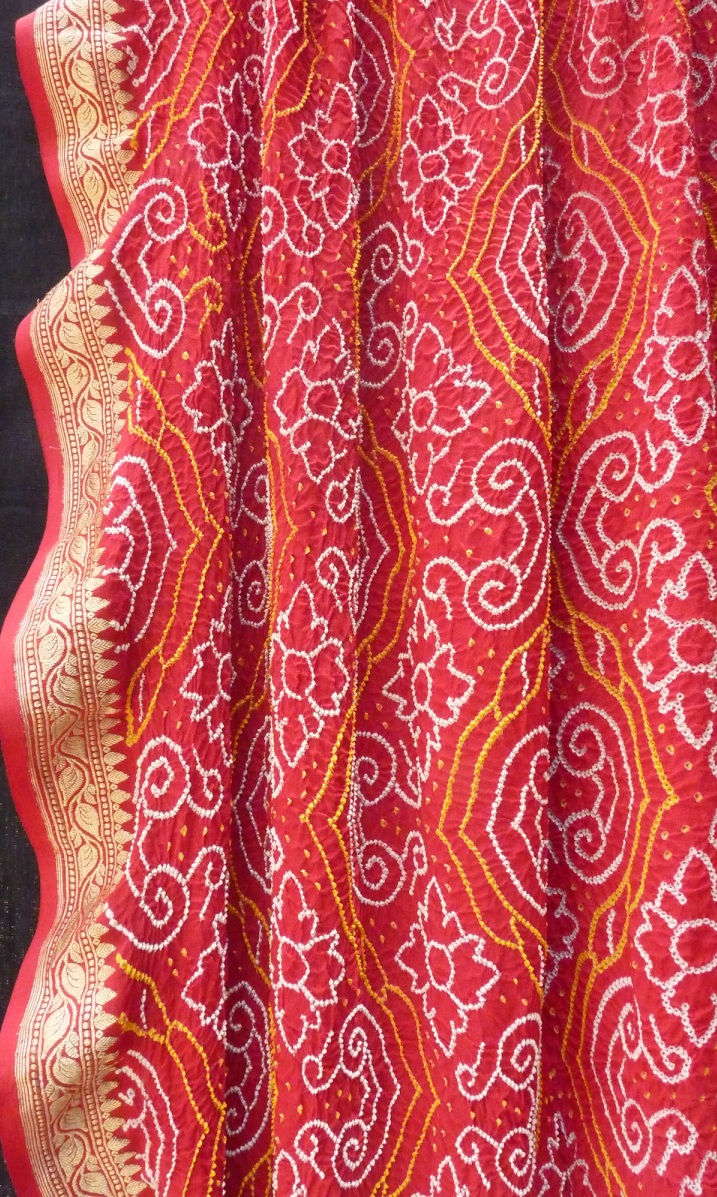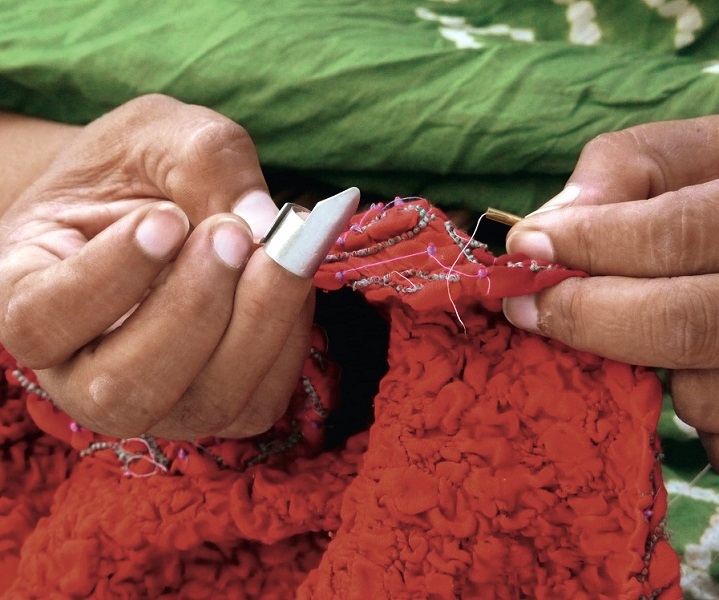
HANDCRAFTED, Sustainable Fashion
Currency

BANDHANI: The Art of Tie-Dye Patterns
The word ‘bandhani’, also known as ‘bandhej’, is derived from the Sanskrit word bandh, to tie, a craft practised in Gujarat and Rajasthan. It is a resist dyeing process where the fabric is pinched and tied with thread before it is dyed to create a pattern made up of small dots. This is one of the most basic of all textile arts, and for centuries, different forms of tie-dye have been practised in many parts of the world, including India, Japan, China, Southeast Asia and various African countries.
Bandhani fabrics were considered auspicious, and were traditionally used by Hindu as well as Muslim communities in Kutch, worn by the bride for her wedding.
The process of creating the bandhani fabric is long and tedious, as every single dot has to be tied separately to create patterns before the material is dyed. The fabric is first washed to de-gum and remove the impurities for an even dyeing. It is then folded twice or four times depending on the design requirement, before the pattern is printed.
 |
 |
 |
Basically, three tools are required for tying the fabric dheri (strong cotton thread), bhungali (glass pipe) and naklo (thimble). There are two types of dots, aniwali bheendi, the basic dot, and mathawali bheendi, which forms a fine ring. Wages for a piece is pre-decided, depending on the design and the number of dots. Some intricately patterned sarees could take over six to eight months to tie before dyeing. Normally, women do the tying in their free time after attending to their children and housework, and manage to earn around Rs. 80 for a day's work.
Once the tying is completed, the fabric pieces are returned to the workshop where they are dyed. Normally the bandhani dots are in white and yellow. In the first stage, the dots that should be white are tied to secure those areas, and the piece is then dyed in a yellow dye bath. The piece is again sent out for tying, and wherever the dots are to remain yellow, the cloth is tied. The fabric is then dyed in the required colour. Great care is taken while dyeing a bandhani piece so that the tied dots do not unravel in the dyeing process when the piece is turned in the dye bath for even dyeing. Once the piece is dried, it is pulled on a cross grain to open the tied knots to see the dot pattern.
More than 25,000 people today earn their livelihood from bandhani in Kutch. Seeing the potential for earning a supplementary income while working in the comfort of one's home, women of other communities have also started learning these skills. There is a growing appreciation for genuine, good quality bandhani, which is very encouraging and this will help the craft will flourish.










